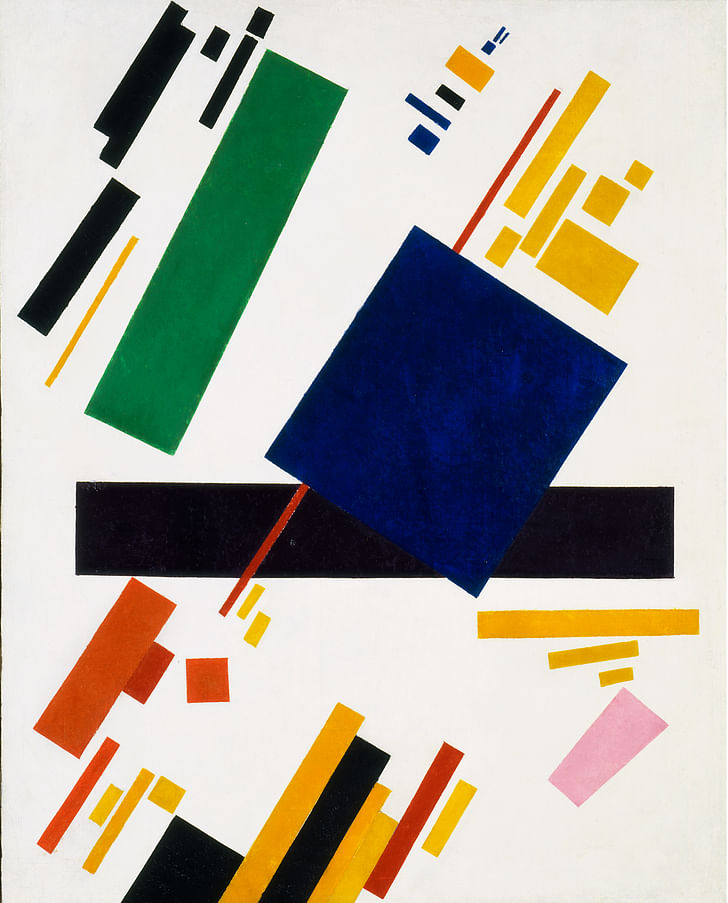

If you didn’t know better, it would be easy to mistake the eager faces populating the swarming mass of ticket lines outside of Bovard Auditorium at USC as the fans of a pop icon instead of the prolific, controversial ‘starchitect’ Zaha Hadid. Behind us, students were being interviewed by reporters from the USC newspaper about the architect; everyone seemed genuinely enthused, albeit perhaps drawn more for her celebrity than appreciation for her work.
When the doors eventually opened, getting in was another scene of chaos. The young ushers enlisted by the Acadia2014 conference on ‘Design Agency’, a series of talks and workshops on the “capacity for computation to inform or challenge traditional design processes”, seemed overwhelmed by the unruly queues. It took a while for everyone to be seated in the large neo-Gothic auditorium, lit up in a panoply of colored lights. While people danced over seats, Hadid stood by the podium. Patrik Schumacher, partner at Zaha Hadid Architects, wandered around the stage, pausing briefly to sit in one of the two Barcelona-esque chairs on the stage, before getting off stage and sitting down in the audience. While Hadid mentioned Schumacher several times throughout the night, it was only in a personal context; Schumacher’s tomes of theory were not invoked – even obliquely – despite their ostensible relevance to the conference’s overall theme.

“Is Frank Gehry here?” Qingyun Ma, Dean of the USC School of Architecture, half-joking inquired of the audience. Soft laughter. “Zaha is the most provocative architect on the planet,” he continued. Gehry, no doubt partially because the school is his alma mater, was the butt of a few jokes throughout the night by Hadid and others. You owe me one,” she joked. But they remained largely innocuous; the whole of Hadid’s talk was infused with a light-hearted humor and confidence symptomatic of an architect whose position in the pantheon of the day’s great architects is largely cemented. The evening was devoid of even a semblance of insecurity: Hadid was here as a favor to the Dean. (Her appearance was arranged by the USC Provost’s Visions and Voices Program, not the Acadia conference.) “You owe me one,” she joked. In the reverent chuckles of the audience, it was clear that so did we.

Hadid started her talk near the beginning during her paper-architecture days, with her Malevich-inspired drawings. She lingered here, granting her formative work the time it deserves[pics of work]. It’s hard not to be struck by these works, which are equally beautiful and fascinating. “I don’t do drugs but I used stay up all night,” Hadid quipped. She claimed she’s now getting too old to get delirious, which is perhaps unfortunate. The delirious abstraction present in these works is part of what makes them so intriguing.

As we progressed into Hadid’s built work – from what is now the 400-person strong entity of Zaha Hadid Architects – it was hard not to have a momentary pang of nostalgia as illustration gives way to photographs. Of course, Hadid’s oeuvre, especially when lined up and intimately presented, is exceedingly impressive. Today, it’s easy for Hadid’s image – a notoriously dominating character whose practice is one of the most defining of an era of big firms, big buildings, and controversial ethical stance – to exceed and envelop her actual work. there was still a quality of vulnerability in the young architect, which seemed to come out of and feed her need to shake up the status quo. Still, there is a glint of conceptual or at least associative radicalism present in her appropriation of early Soviet design; it was not just color and geometry that she borrowed from Suprematism but also a correspondent desire to unleash the potential of design to truly radicalize experience. Somehow, that possibility feels to have given way to the triumph of an entirely formal experimentation as her buildings leapt from the page. In her earlier drawings, there was still a quality of vulnerability in the young architect, which seemed to come out of and feed her need to shake up the status quo.
For the first half of her hour-long talk, Hadid described her work in noticeably organicist language. She talked chiefly of the structures as landmasses; one building is “a continuous plateau.” MAXXI, the contemporary art museum she designed in Rome, has paths like “streams or rivers.” The Pierre Rives is a “series of rocks, each with its own program.”
During the second part, Hadid spoke chiefly of her firm’s use of shell-structures, exoskeletons, and tensile fabrics. She took time to discuss the early research into these forms. Hadid Architect’s experimentation into lightweight pavilions, like her Serpentine Sackler Gallery, juxtaposed with larger projects like the Japanese National Stadium in Tokyo, formed a useful frame for considering much of the firm’s recent work.
Hadid ended on the Tokyo stadium. “Japanese architects have been having a wonderful time with this project,” she quipped before making a dig at Toyo Ito (who, along with Fumihiko Maki, had led a protest against the project). This was the only acknowledgment by Hadid throughout the lecture of any of the controversies that have recently embroiled her firm, such as the alleged use of slave labor on one of her projects, suing Martin Filler of the New York Review of Books for defamation, or taking on known authoritarian regimes as clients. And she laughed it off.

Afterwards, Schumacher joined Hadid back on stage and the two sat down to take questions. Like Hadid, he also seemed genuinely happy to be at the event that night. They answered largely soft-ball questions with humor (but not dismissively). One such from the audience:
"Did Gaudi inspire you?” Hadid: “I have no inspiration at all.” (Laughter)
When asked about the recent denouncement of so-called “weird” architecture in China, Schumacher enlivened, passionately elaborating the importance of “experimental” architecture as “civilization” becomes more networked. He expounded the need for a collective embrace of such architecture – presumably, his parametricist thought. “While we must make technological advancements,” he continued. “we must also make social investments in this architecture.” Jocularity might please a crowd, but today’s cultural climate demands an occasional flinch.It seems clear, both in Hadid’s celebrity and in the sheer amount of projects the firm has, that a good chunk of society remains invested in their work and not without warrant. What’s less clear is whether such claims to social – let alone civilizational – importance can be legitimated. I wish that Hadid still retained some of the vulnerability of a younger architect, who might feel the need to more actively address the maelstrom of criticism that has recently come her way. Or, at the very least, adapt her talk to the particular concerns of the conference, in particular the agency of computer-aided design. Jocularity might please a crowd, but today’s cultural climate demands an occasional flinch. While she still gets – and deserves, to a great degree – accolades, I hope that soon the time will come for her and other members of today’s architectural pantheon to shrug off their self-assuredness and actually defend their not-uncontroversial work (instead of simply showing it off.)
Writer and fake architect, among other feints. Principal at Adjustments Agency. Co-founder of Encyclopedia Inc. Get in touch: nicholas@archinect.com
3 Comments
Sometimes one wishes to have a "delete" button on some archinect posts. Thanks for the article though!
Some people are inspired by early twentieth-century avant-garde art while others may get off on computers or being "experimental". I'm just not sure architects need to defend their work anymore than the client who commissioned it or the community that permitted it. But should one be asked a question that makes them uncomfortable, humor is preferable to a middle finger. Maybe Patrik and Zaha were cognizant of Gehry's recent bad press despite being members of the "architectural pantheon". How does one get into that club anyway?
Zaha is a great artist, but unfortunately, some people take the word "Suprematist" literally.
Block this user
Are you sure you want to block this user and hide all related comments throughout the site?
Archinect
This is your first comment on Archinect. Your comment will be visible once approved.